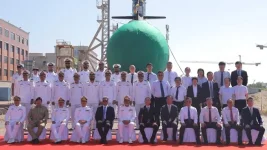
India must take bold and forward-looking trade policy measures by spearheading an India-led Free Trade Agreement (FTA) within the Indian Ocean Rim Association and pursue membership in major regional trade blocs such as the Regional Comprehensive Economic Partnership (RCEP) and the Comprehensive and Progressive Agreement for Trans-Pacific Partnership (CPTPP), analysts say.
These initiatives, they argue, would not only expand India’s trade footprint but also signal a clear commitment to “strategic autonomy” allowing India to navigate shifting geopolitical alignments on its own terms. The observation comes as New Delhi faces a steep 50 percent US tariff, comprising the 25 percent duty imposed on August 7 and another 25 percent set to take effect on August 28 as a penalty for buying Russian oil.
President Donald Trump who had a meeting with Russian President Vladimir Putin in Alaska yesterday for peace in Ukraine, said “They (Russia) lost oil client India which was doing 40 percent of the oil and China is doing a lot. If I did a secondary tariff would be devastating…If I have to, I will, may be I won’t have to”. Former Ambassador Anil Trigunayat condemned the tariff decision, calling it “totally unjustified, illogical, and unwarranted,” particularly as trade negotiations were underway. “The Russian oil pretext is unworthy of even a thought,” he said. “The EU, China, and even the U.S. have been fueling the Russian war machine for their own national interests, increasing their imports of gas and rare earths.
” He noted that Russian crude “is not sanctioned, only price-capped and the US has repeatedly acknowledged that India’s purchases have helped stabilize global oil markets, while ensuring steady supplies to Europe and the U.S. of refined products.” According to Trigunayat, unilateral measures like these tariffs will push India to build “its own firewalls” and “a diversified network of reliable, mutually beneficial partnerships” under its multi-alignment policy. “In the medium to long run, the U.S. will be a strategic loser,” he added, suggesting that political motivations—such as claiming credit for preventing an India-Pakistan war—were also behind the tariff decision. Analysts believe the 50 percent tariff could open opportunities for India to diversify its markets, reducing the US-India trade deficit. In recent years, India has expanded imports from Angola, the US, and West Asia. Since 2022, it has also been one of the largest buyers of discounted Russian crude—accounting for about 35 percent of imports in the first half of this year—despite Western pressure to cut back.
Faisal Ahmed,professor of international business and geopolitics at the FORE School of Management,stressed that while certain sectors will be affected, “the excess tariff will have significant spillover effects on other trade partners as well.” He said India will be able to substantially diversify, and indeed divert, its exports to other markets. So, this 50 percent tariff will neither create a win-win for the United States nor will it help increase the volume of India US bilateral trade. He dismissed US Senator Lindsey Graham’s comments on potential sanctions against India (and BRICS) over Russian oil as “mere rhetoric,” adding “It in fact carries no significance for India’s stance on the new tariff imposition. His statement is a repetition of what Trump has already said about Russian oil imports by India.
In fact, if BRICS trades oil in local currency or non-dollar currencies, the impact of a US sanction would definitely be marginalised” Faisal Ahmed cautioned that Trump was using the Russian oil issue “not as a bargaining chip, but as a deterrent” to force India to side with the US against China. “Strategic autonomy is the way to go,” he said, urging India to act quickly. Asked about the Alaska summit impact he said “the talks will reduce Trump’s over sensitivity on India’s import of Russian oil.
But we still have to be cautious about it, because Trump is using the Russian oil issue not as a bargaining point, but as a deterrent, as he possibly does not want India to exercise “strategic autonomy”! Trump wants India to choose the U.S. side against China, without any ambiguity. But in India’s national interest “strategic autonomy” is definitely the way to go,” Faisal Ahmed added. Calling for India to act rather than wait, he said, “We can’t wait and watch. I think we need to make some quicker announcements, if not immediate actions. These include at least two things: a) we need to express our intent to join the mega-regional blocs including first RCEP, and then CPTPP and, b) we need to announce an India-led Free Trade Agreement in the Indian Ocean Rim Association. These two initiatives will solidify India’s geo-economic and geo-strategic acceptance, and deter Trump from coercively imposing tariffs on India.
” While the tariff dispute unfolds, India is recalibrating its energy imports. Supply chains are shifting and Africa’s largest oil producer Nigeria i rising on India’s priority list. “Nigeria, is rising on India’s priority list. Between September and October, state-owned refiners are set to bring in over two million barrels of Nigerian crude,” Ambassador Trigunyat who has served in Nigeria, said, He said diversification is not about “moving away” from Russia, but is part of a long-standing Indian policy. “We decide what is good for us, not what suits another country’s leadership.” Nigeria’s energy sector is also undergoing structural changes, with increasing local ownership and policy shifts aimed at expanding gas production, including the proposed Nigeria-Morocco pipeline.
For India, long-term contracts and government-to-government agreements remain key to ensuring stable supplies. Trigunayat said “Nigeria has long been a reliable and strong partner for India, not only in crude oil trade but also in broader historic relationship. Given that India imports over 80 percent of its oil needs, we have to source from multiple suppliers, choosing those whose crude suits our refineries and offers cost-effective, secure deliveries. Over time, India has significantly expanded its refining capacity.” “Since the start of the Russia-Ukraine war in 2022, Gulf producers, traditionally our main suppliers were pressured by the US and Europe to divert shipments to European markets. This pushed India to seek alternative, lower-cost sources, which is why we began importing more discounted crude from Russia. It’s worth noting that Russian oil is not banned by the West, it is subject to a price cap, and India’s purchases have stayed within that limit.”


